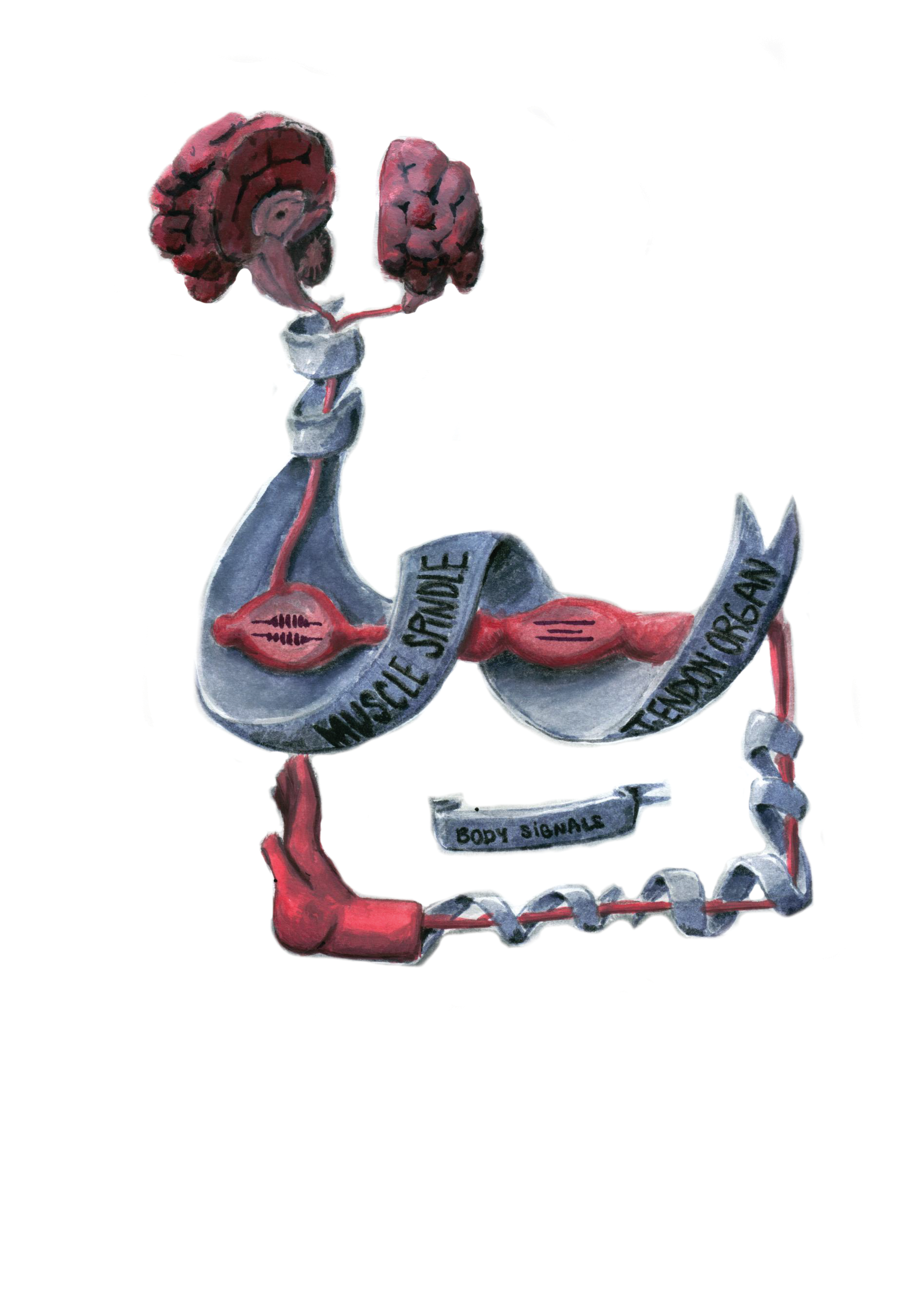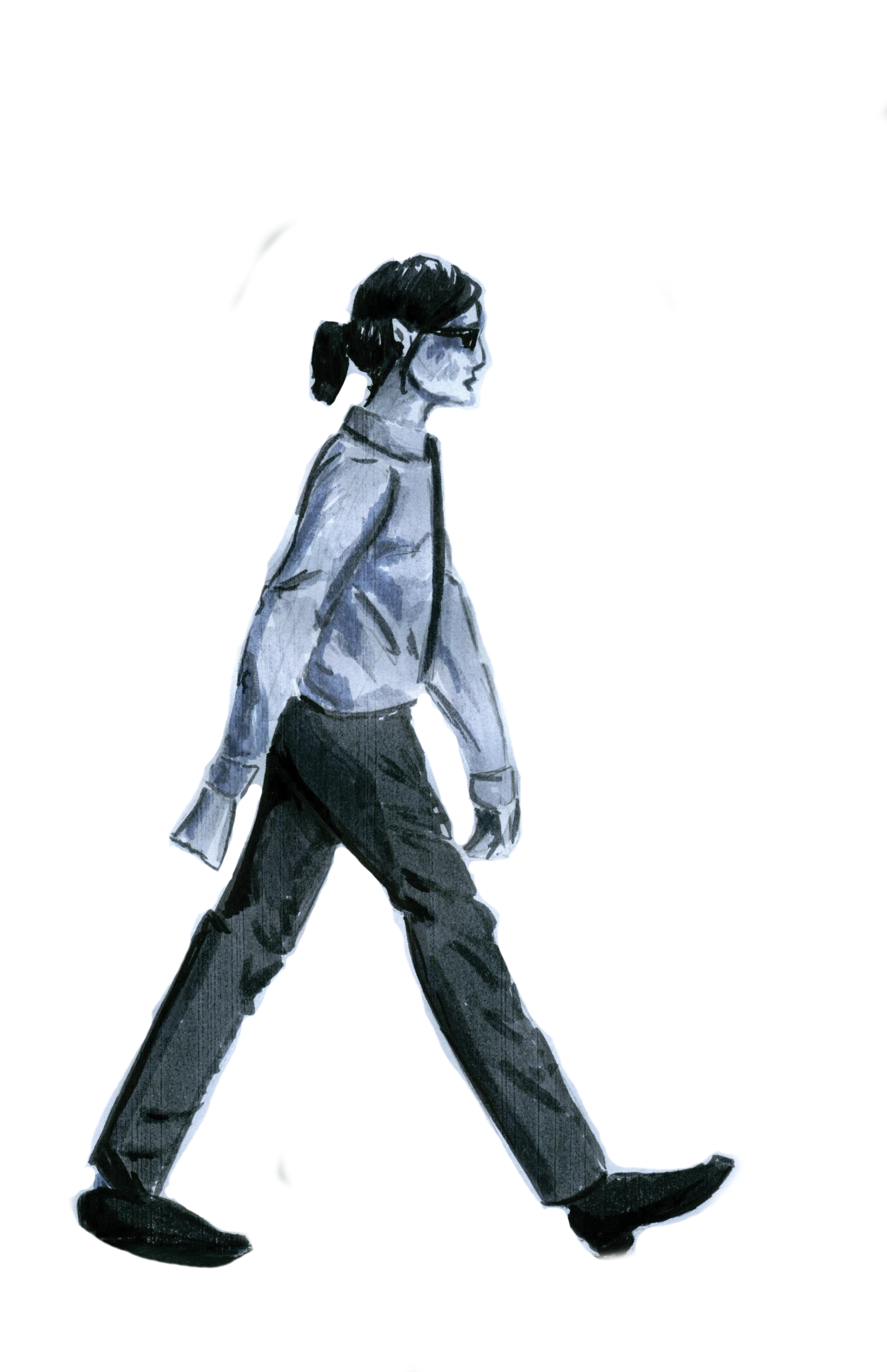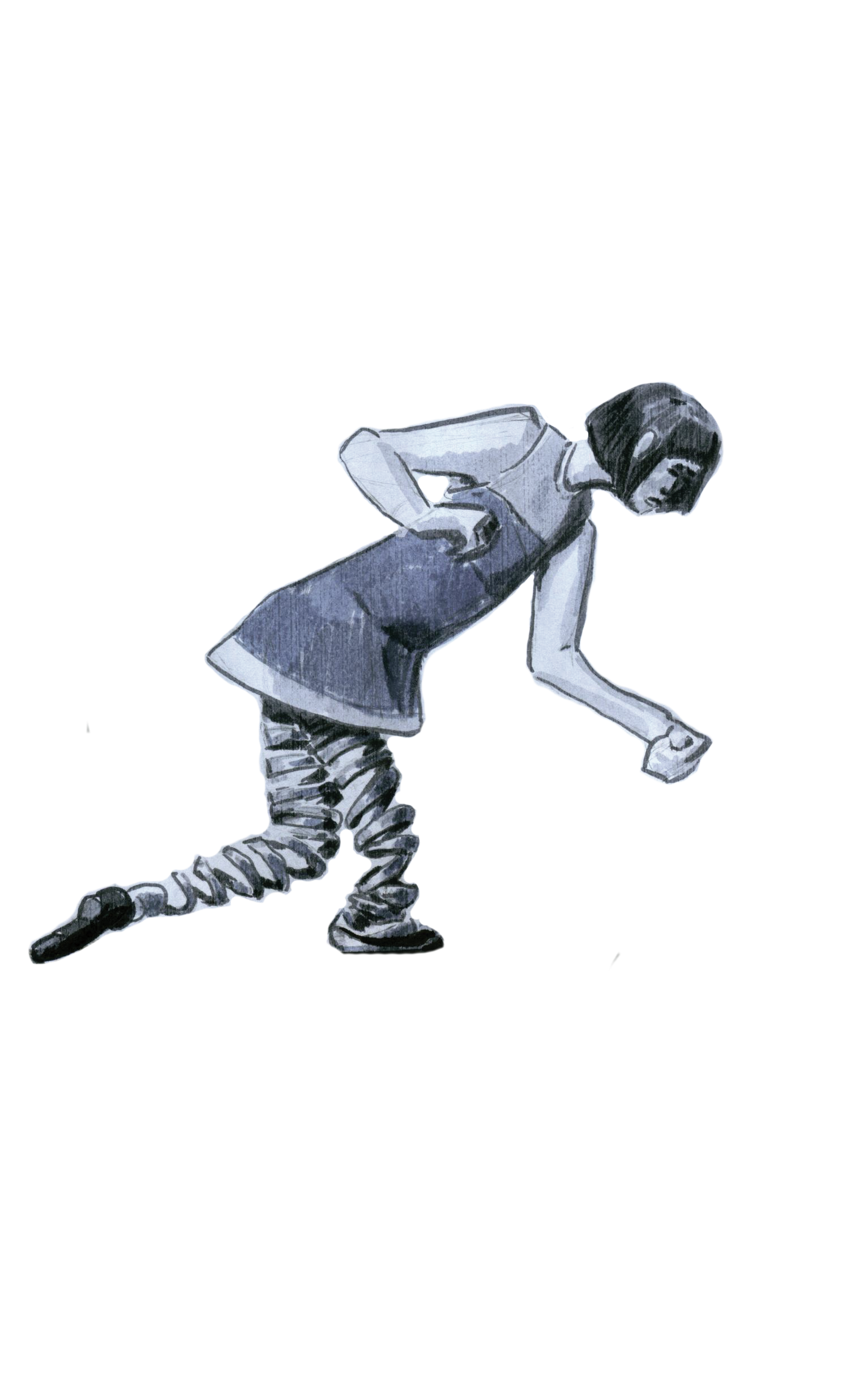Touch, smell, taste, sight, and hearing: many believe these are the limits of the nervous system’s sensory capabilities. However, the complexity of the brain and its interaction with the world are not limited to the five senses. If you define a sense by the organs and receptors designed to detect a certain stimulus, then you can divide the overall sense of “touch” into pressure, fine touch, vibration, and pain. Some even speculate our ability to empathize or perceive the emotions of others can be considered a separate sense because it is supported by a specific circuit of brain regions [1]. While the merits of these “pseudo-senses” are debatable, proprioception is an additional sense that has been accepted as a true sensory system like the conventional five senses. Proprioception is the system that allows us to perceive our physical selves, to turn a page without looking at our hands, or to stand and walk without falling down, unaided by other senses such as vision or touch.
Similar to the better-known senses, this sensation (e.g. the state or location of the body) is mediated by sensory receptors, called proprioceptors. The proprioceptors are a type of mechanoreceptor, a receptor that responds specifically to mechanical stimuli such as touch. These proprioceptors are located throughout the body in the muscles and tendons [2]. Muscle spindles, for example, are small bundles of muscle fibers innervated by proprioceptive fibers that convey information regarding muscle contraction and length. This information is integrated in the spinal cord with other proprioceptive inputs and descending output from the brain, which modulate the proprioceptive information. The information then ascends to the brain through tracts in the spinal cord before terminating in the somatosensory cortex and in the cerebellum. Once in the brain, the information can be processed [2]. Unlike other senses, this processing occurs both consciously and unconsciously. The conscious processing occurs in the somatosensory cortex along with other touch information, while the unconscious processing occurs primarily in the cerebellum [3].
Consciously, proprioception allows one to recognize the location of their limbs while closing their eyes. However, much of the sense of proprioception can be considered unconscious because it doesn’t provide an obvious sensation, such as how vision creates a mental image in the brain [4]. In other words, people don’t consciously acknowledge the location of their limbs at all times. They know when they are looking at an object or hearing a sound, but don’t always know their brain is keeping track of the location of each of their fingers or toes. However, proprioception becomes especially apparent when there is a disruption in the sense. The sense of proprioception is not often evident to human consciousness because sensory input from the proprioceptors matches a person’s expectation of movement. If this sense malfunctions, the execution of the movement would not match the expectation, making the necessity of the sense evident [4]. For example, in his book The Man Who Mistook His Wife for A Hat, the late Oliver Sacks describes a young woman who lost her sense of proprioception [5]. She was unable to recognize or move her body parts deliberately. When she attempted to pick up an object she would miss the target, or when she looked away from her hands, they would wander away from her body and perform movements for which she had no intention. Her inability to execute deliberate movements and her performance of movements without intention resulted in a mismatch of her expectation and execution [5]. A mismatch or disruption such as this makes the subject aware of the proprioceptive sense, or lack thereof.
Without proprioception, muscle movement is uncoordinated [6]. It can go so far as to render patients incapable of both executing movements and recognizing the orientation of their bodies without the use of the visual system [5]. Loss of proprioception can occur in a number of ways. Proprioception changes over time in a single individual, with low proprioceptive abilities in infants that increase until young-adulthood [6]. The sense then begins to deteriorate with age due to a reduction in the insulation of myelinated neurons in the peripheral nervous system, changes in muscle spindle sensitivity, and central nervous system changes, such as decreases in activity in brain regions associated with proprioception. Conditions such as stroke, Parkinson’s disease, and schizophrenia have also been related to deficits in proprioception [6]. Recent research has shed light on the genetic basis of proprioception, which may be helpful in further understanding why people lose this sense.

The genetic basis of proprioception has been explored in mice. Researchers Woo et. al. solidified the relationship between proprioception and the PIEZO2 gene [7]. The gene is expressed in mechanoreceptors, such as those involved in proprioception. The researchers found that the PIEZO2 gene was the primary transduction ion channel for the proprioceptors and that proprioception was disrupted in mice when the gene was inhibited. Ion channels are used by cells to transduce signals; when the proprioceptor is activated, it allows ions to flow in or out of the cell, transducing the signal into an electrical one that can be interpreted by the nervous system. They also discussed the potential for other proteins involved in proprioception, but did not name any specific genes [7]. Another study performed by Klein et. al. explored a different gene that codes for TrkC tyrosine protein kinase receptors, which may also be involved in proprioception [8]. Mice without proper expression of the gene displayed irregular posture and movement [8]. Research on genes such as these provides a more detailed picture of how proprioception works and what happens when the sense is disrupted.

The sense of proprioception, like many of our seemingly unconscious senses, is often taken for granted. However, when a sense like proprioception is disrupted, its importance to our interactions with our environment becomes exceedingly apparent. Our combined senses allow us to exist consciously, and the loss of one can have a severe impact on day-to-day life. Understanding the disruption of proprioception involves understanding the specific mechanisms behind the sense. Consequently, genetic research proves to be a helpful tool in learning the different levels at which proprioception can be lost. Research dictating the flow of information from the proprioceptors to the brain also provides useful information for how and where the disruption of the sense may occur. This information can further assist medical professionals in diagnosing the specific cause of a proprioceptive deficit and in understanding the function of the system as a whole.

References
- Shirtcliff E. A., Vitacco M. J., Graf A. R., Gostisha A. J., Merz J. L., & Zahn-Waxler C. (2009). Neurobiology of Empathy and Callousness: Implications for Development of Antisocial Behavior. Behavior Sciences and the Law, 27, 137-171. doi: 10.1002/bsl.862
- Reimann B. L., Lephart S. M. (2002). The Sensormimotor System, Part I: The Physiologic Basis of Functional Joint Stability. Journal of Athletic Training, 37(1), 71-79.
- Johnson E. O., Soucacos P. N. (2010). Proprioception. International Encyclopedia foe Rehabilitation. Web: http://cirrie.buffalo.edu/encyclopedia/en/article/337
- Proske U., Gandevia S. C., (2012). The Proprioceptive Senses: Their Roles in Signaling Body Shape, Body Position and Movement, and Muscle Force. Physiological Reviews, 92(4), 1651-1697. doi: 10.1152/physrev.00048.2011
- Sacks, O. (1987). The man who mistook his wife for a hat and other clinical tales. New York: Perennial Library.
- Suetterlin K. J., Sayer A. A., (2013). Proprioception: Where Are We Now? A commentary on clinical assessment, changes across life course, functional implications, and future interventions. Oxford Journals, 43 (3), 313-318. doi: 10.1093/ageing/aft174
- Woo S. H., Lukacs V., de Nooij J. C., Zaytseva D., Criddle C. R., Francisco A., Jessell T. M., Wilkinson K. A., & Patapoutian A. (2015). PIEZO2 is the Principle Mechanotransduction Channel for Proprioception. Nat Neurosci, 18(12), 1756-1762. doi: 10.1038/nn.4162
- Klein R., Silos-Santiago I., Smeyne R. J., Lira S. A., Brambilla R., Bryant S., Zhang L., Snider W. D., & Barbacid M. (1994). Disruption of the Neurotrphin-3 Receptor Gene TrkC Eliminates la muscle Afferents and Results in Abnormal Movements. Nature, 368, 249-251. doi: 10.1038/368249a0
